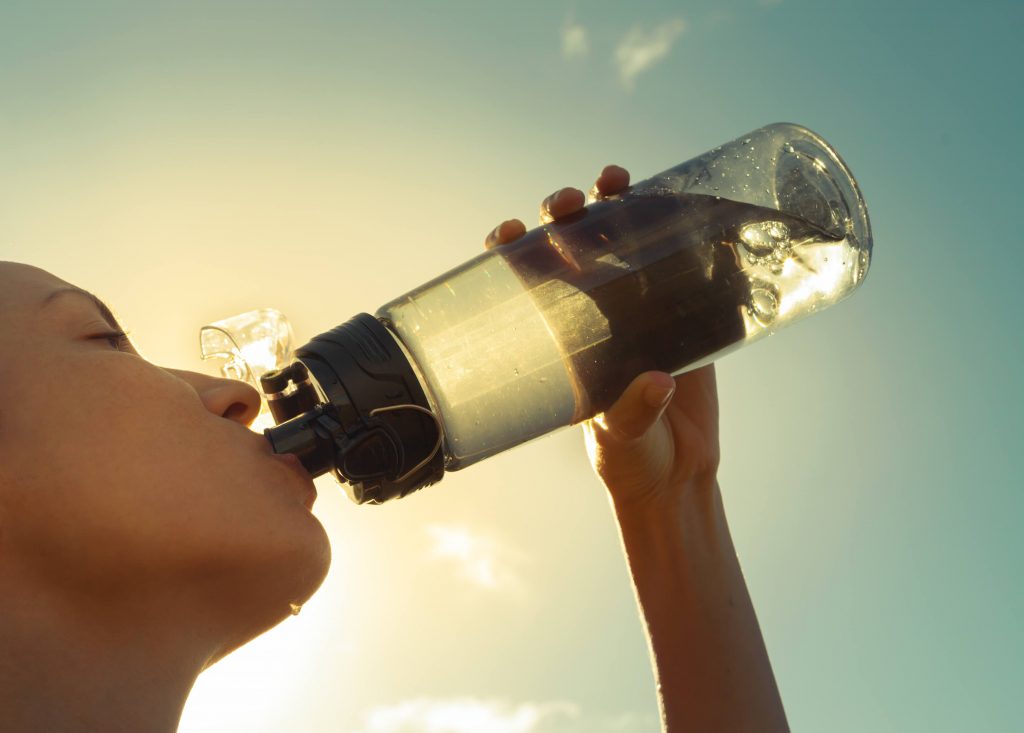-
Mayo Clinic Q and A: Hydration in the summer

DEAR MAYO CLINIC: I am prone to kidney stones, so I know it's important for me to stay hydrated while I exercise. But do I need to change what I drink in the summer? A friend mentioned that I might be better with a sports drink versus water. I'm also wondering how much I should drink. Can you provide any advice?
ANSWER: Staying hydrated during exercise is important. You can become dehydrated if you take in too little fluid, especially during the hot summer months. Conversely, consuming too much fluid can be problematic. Some people are known to experience what is known as exercise-induced low sodium, or hyponatremia. Finding a balance is importance.
The purpose of drinking fluid — whether water or electrolyte-containing beverages — is to rehydrate the body and put fluid back into your system so your organs can function properly.
How much to drink and when depends on your situation. Generally, it's recommended that you should consume at least two liters of water or other beverages per day.
The general rule of thumb among health care professionals is to drink to thirst. Although guidelines speak to hydration before, during and after exercise, I always tell people to look and listen to your body as the best indicator when you need hydration. That said, thirst isn't always a helpful indicator of hydration status, particularly when exercising. If you're exercising and thirsty, you are already well on your way to becoming dehydrated, compared to if you were resting and thirsty.
You will need to take in more fluid than usual at times. During the summer months, for instance, when weather is hotter and more humid, it is important to drink more fluid, especially if you are exercising outdoors.
As far as what to drink, for most people, water is the best place to start. Depending on how extensively you exercise, having a beverage that includes electrolytes also is important to replace nutrients and electrolytes lost during sweating, such as sodium and chloride.
Sodium is important because it helps you absorb glucose and water. Aim for about 450 milligrams of sodium per 24 ounces of sports drink. Avoid salt tablets, as they do not include all the electrolytes you need and you can easily use too much. You also can look for a drink with some carbohydrates, since they provide fuel for your working muscles.
It is best to consume about half your fluid intake in water and half in a beverage that contains electrolytes. Mind the amount of sugar intake, though. While sugar is important, especially for endurance athletes, too much sugar can cause gastrointestinal issues, including bloating, cramping or diarrhea. One recommendation is to keep sugar below 30 grams per 24 ounces of a sports drink.
The best rule of thumb is when you exercise, drink to thirst, and hydrate your body with plain water and, as needed, a sports beverage. In the summer, also be mindful about how you feel as you exercise.
I find that many people do not drink enough water daily, so they may feel better after increasing hydration, no matter the source. In addition, avoid drinking alcohol when you are outdoors because alcohol is a diuretic. This means alcohol will cause your body to lose water, leading to dehydration much faster.
As you spend time outdoors, be aware of symptoms of dehydration, which can include:
- Extreme thirst.
- Less frequent urination.
- Dark-colored urine.
- Fatigue.
- Dizziness.
- Confusion.
Also, if you experience cramps or headache while exercising, it is best to stop, hydrate and potentially seek medical attention. It is important to rule out other warm-weather issues, including heat exhaustion. — Dr. Brittany Beel, Emergency Medicine, Mayo Clinic, Jacksonville, Florida
****************************
Related Articles
- Safety tips to prevent heat-related illness published 7/19/22
- Welcome summer with 5 summer safety tips published 6/24/22
- Mayo Clinic Minute: Heat exhaustion and heatstroke published 6/17/22
- Consumer Health: How much water do you need? published 3/31/21






